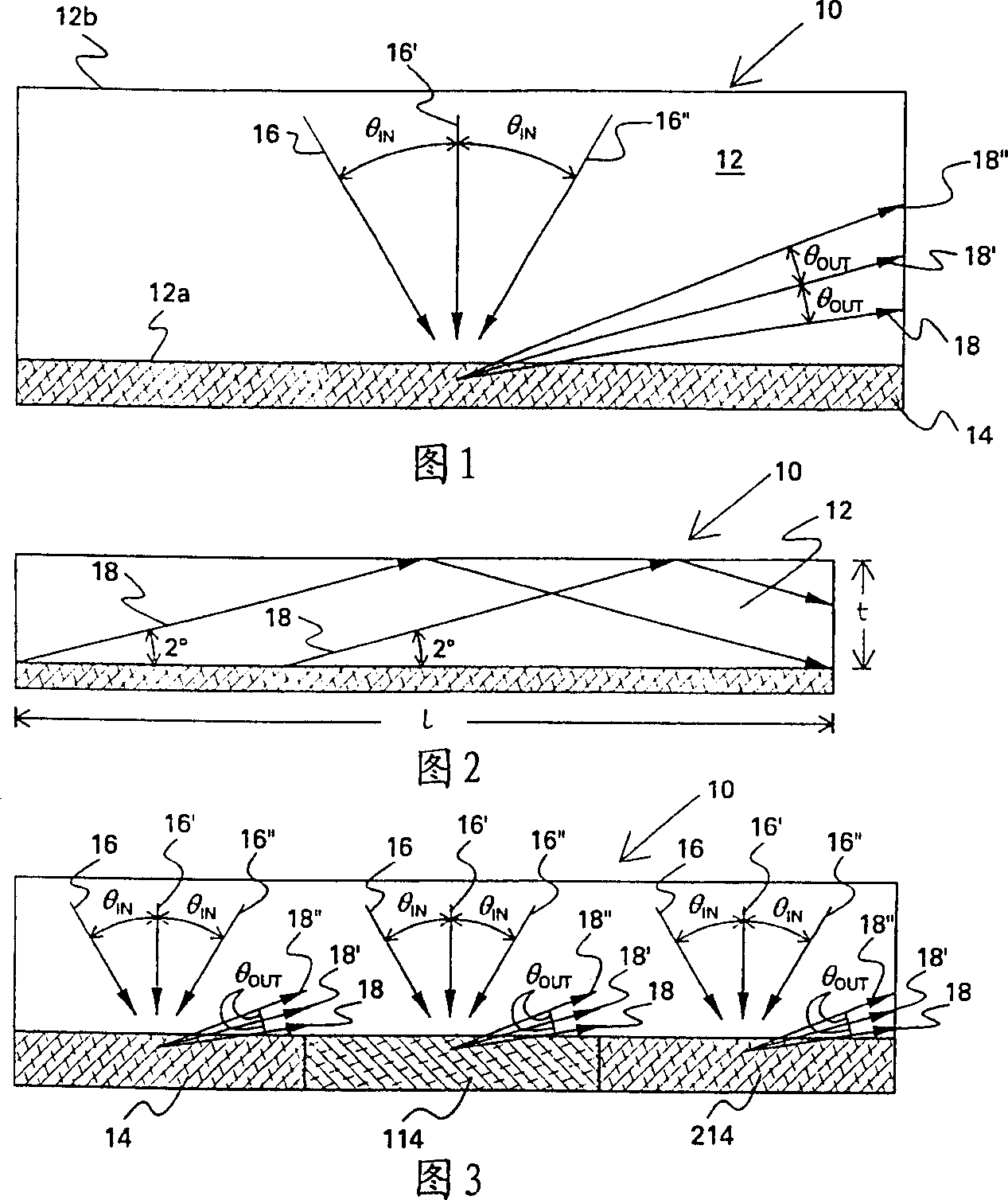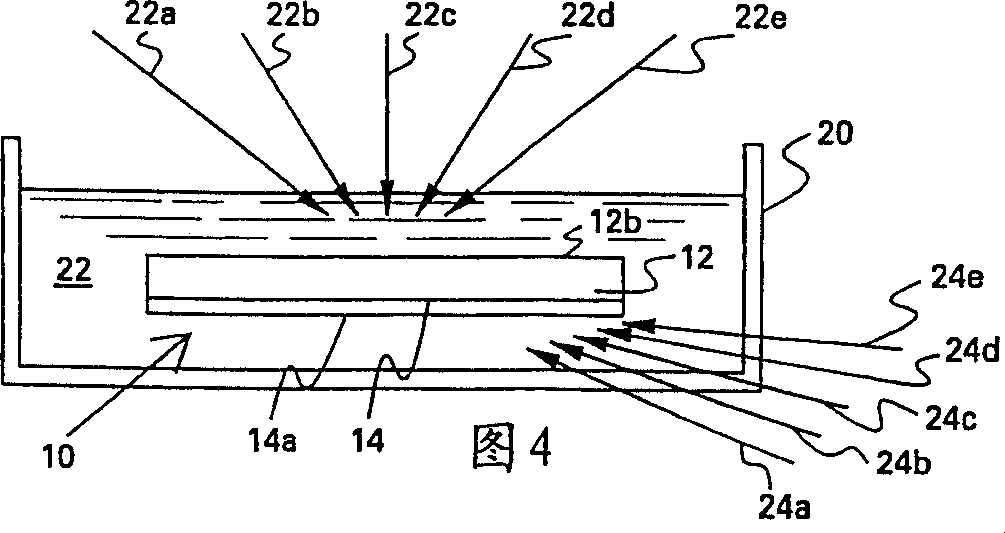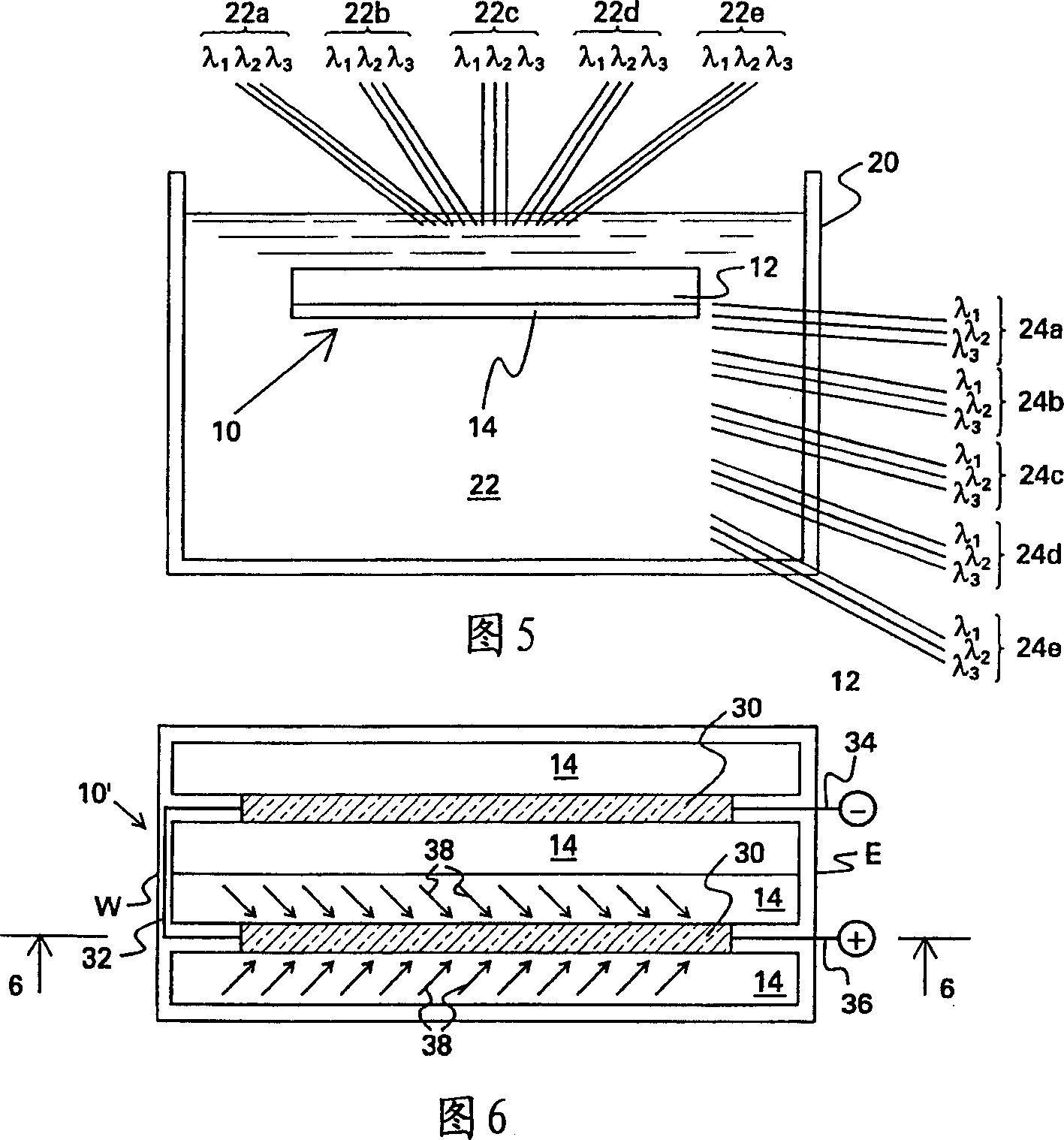Device for concentrating optical radiation
A technology of light radiation and plane concentrating, applied in heating devices, solar thermal devices, optics, etc., can solve the problems of high manufacturing cost, high absorption loss, and difficulty in manufacturing, and achieve the effect of simple design and manufacturing and low energy loss
- Summary
- Abstract
- Description
- Claims
- Application Information
AI Technical Summary
Problems solved by technology
Method used
Image
Examples
example example 1
[0125] Films comprising multiplexed (angular, spectral and spatial) holographic films bonded to low-iron glass panels have been fabricated with large acceptance angles. A gelatin holographic film was coated on a 3 mm thick low iron glass (Solarphire glass) flat plate. Holographic optical elements were recorded in the film using an argon-ion laser with a wavelength of 488 nm. This film panel was then bonded to another 3 mm thick low iron glass panel (Solarphire glass) using Springborn Laboratories EVA adhesive. EVA is an adhesive commonly used in the construction of photovoltaic modules. The photovoltaic cells were then bonded to the rear surface of the glass using NOA61 optical adhesive. The rear surface of the battery is then protected by gluing a thin aluminum plate to the back of the battery using conventional 3M high-adhesive double-sided tape. The device measured 6 inches by 9 inches. The PV cells are 1 inch wide and 4 inches long. The holographic area extends beyond t...
example 2
[0126] A two-layer holographic film laminate was constructed in the same manner as described in Example 1, with the only difference being that the additional holographic film layer was applied to the second glass. Due to the difference in HOE, the two thin film layers concentrate energy from different parts of the solar spectrum. The combined stack of two thin films forms an angular and spatial multiplexing device for concentrating solar energy over a wide range of incident angles. The first film focuses energy in the visible part of the spectrum (approximately 400 to 700 nm), and the second hologram focuses energy in the infrared (approximately 700 to 1100 nm). The peak diffraction efficiency was 65%. The electrical conversion efficiency of the device was measured to be 6.1%. The device gathers energy from the 160° diurnal angular variation and the 45° seasonal variation in the angle of incidence.
PUM
 Login to View More
Login to View More Abstract
Description
Claims
Application Information
 Login to View More
Login to View More - R&D
- Intellectual Property
- Life Sciences
- Materials
- Tech Scout
- Unparalleled Data Quality
- Higher Quality Content
- 60% Fewer Hallucinations
Browse by: Latest US Patents, China's latest patents, Technical Efficacy Thesaurus, Application Domain, Technology Topic, Popular Technical Reports.
© 2025 PatSnap. All rights reserved.Legal|Privacy policy|Modern Slavery Act Transparency Statement|Sitemap|About US| Contact US: help@patsnap.com



